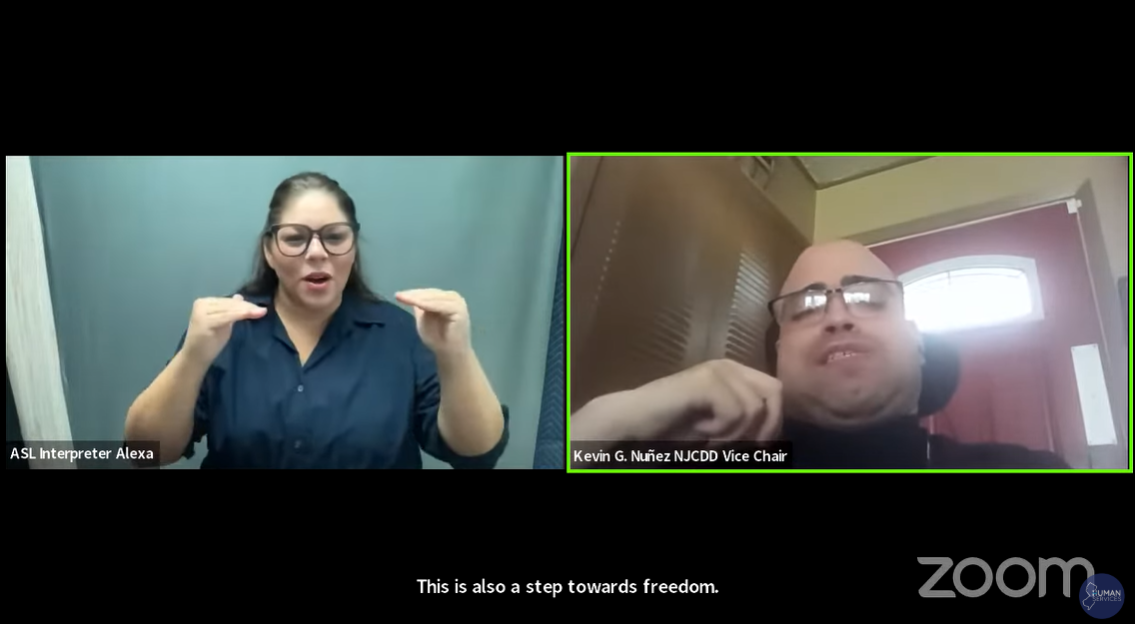Making it easier for the disability community to find services through NJ.gov/disabilities
Crystal Peñalosa, Digital Product Lead
May 1st, 2025
Ensuring that people with disabilities—and others in the disability community—can navigate state government programs in a way that makes sense for them is critically important. Here’s the story of how New Jersey agencies and people with disabilities co-created NJ.gov/disabilities, a hub with meaningful and actionable information for people with disabilities as well as their families and caregivers.
How did NJ.gov/disabilities come about?
A couple years ago, the Office of Innovation, the Department of Human Services, the Office of Information Technology, and the Governor’s Office began working on a new website that would help the nearly 1 million New Jerseyans with disabilities find services and support. The goal was to bring together in an easy-to-navigate location the most helpful information from nearly 200 programs offered by dozens of agencies.
Some of these resources are already compiled in a popular, regularly-updated, annually-printed resources guide, but the new, intuitive, online hub would take the state’s commitment to the disability community to a new level.
The key to a real solution, though, was in how such a hub would be created.
Step one was to listen. The team knew that any new, public website needed to be grounded in a robust and ongoing feedback loop from potential users of the site. State agencies brought together people with disabilities, advocacy organizations, accessibility experts, and others. Through one-on-one meetings, surveys, and other feedback mechanisms, a picture started to emerge of what the Hub should look like.
An accessibility-first approach
First, it quickly became clear that the Disability Information Hub itself must meet high standards of accessibility. The community had started telling us which topics were of most interest—healthcare programs, help with utility bills, transportation assistance, in-home support, Social Security and Medicaid—but all of that input would be worthless unless they could actually access the information.
So we worked to ensure that pages were ADA compliant and adhered to Web Content Accessibility Guidelines. That meant, for example, ensuring that pages were navigable for screen readers, fully accessible via keyboard, and had up to 400% zoom. (Today, we’re taking further steps, such as working to integrate more ASL videos to further enhance accessibility for people who are deaf or hard of hearing.)
As the development process moved along, we kept testing with users directly. Every page and piece of content being designed needed to ensure that the disability community could find what they needed quickly and easily. Because of that purposeful, diligent collaboration, content started coming together in a way that made sense for the types of people and communities who might access the site.
“Not about us, without us.”
We call this approach co-designing.
For example, input from the disability community helped the team build landing-page content that was organized by types of community. After all, an individual who is deaf has expectations and needs for information that might differ greatly from a caregiver looking for resources for someone in their family with an intellectual disability.
We also organized content by life stages, with areas specifically focused on children with disabilities, transitioning to adulthood, and older adults.
The community also told us to highlight employment resources and other information (legal advocacy, housing, etc.) that support independence for people with disabilities. You’ll see tabs on the home page for those areas as a result of that input.
There are even “quick start” guides that help folks quickly get to the exact resource they need.
Finally, we knew the importance of obtaining live assistance, so we prominently included information on the site for connecting with a real person—a certified community resource specialist who can help navigate each caller’s situation with them.
Kevin Nuñez of the New Jersey Council on Developmental Disabilities summed it up in his remarks at the hub’s launch last year, saying that New Jersey’s North Star was “Nothing about us without us.” Today we continue to improve on the site as we work alongside community members and hear their ideas and needs.
Success and ongoing promotion
The results of this on-the-ground partnership are clear: nj.gov/disabilities delivers exactly what it should, raising up the most valuable information and cutting out jargon along the way. At less than a year old, the site has attracted more than 90,000 visits, and we’re getting strong, positive feedback from users.
The Division of Disability Services (part of the Department of Human Services) now promotes the Hub throughout the state. In fact, their recently-hired, first-ever program coordinator for the Hub (Elizabeth Williams) is showing off the website this week with local agencies, nonprofits, advocates and others at the annual Abilities Expo in Edison.
In addition to keeping the website continually up-to-date, Elizabeth is giving presentations in person and virtually to an array of allied organizations. She has also met with county boards, health departments, WIC programs, and municipalities, some of whom are linking to the new Hub on their own websites to ensure that local residents are aware.
Together, we’re making sure all New Jerseyans can benefit from this resource, and share it widely.
Are you part of the disability community? Take a look at the site.
At the bottom of each page, there’s a button to tell us whether you found what you’re looking for and to provide feedback, which is always welcome. With your help, we can make the hub maximally useful and relevant to as many New Jerseyans with disabilities—and the people who support them—as possible.
I’m confident that our state government will continue to deliver programs and services in effective ways if we take human-centered approaches like we did with NJ.gov/disabilities. And a special thanks to the professionals at the Department of Human Services, the Governor’s Office, the Office of Information Technology, the Office of the Ombudsman for Individuals with Intellectual or Developmental Disabilities and Their Families, and my colleagues in the Office of Innovation who contributed to the success of this popular new resource.
 Office of Innovation
Office of Innovation
